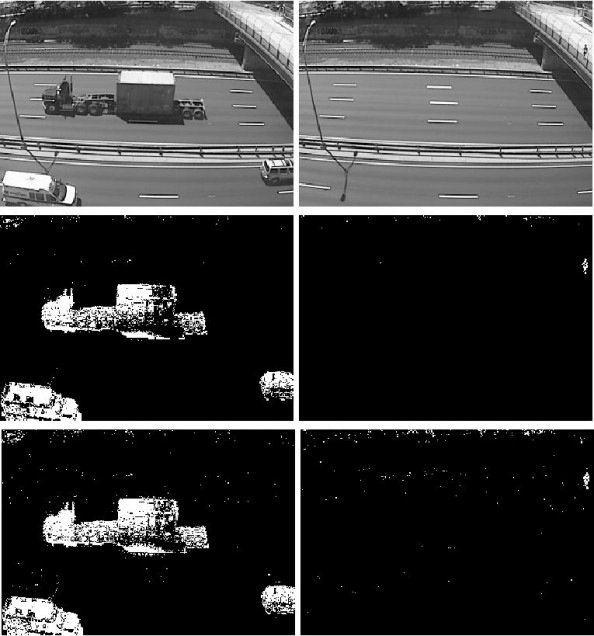Background Subtraction with FDR Control
Team: M.J. McHugh, J. Konrad, V. Saligrama, D. Castanon
Funding: Air Force Office of Sponsored Research (SBIR), College of Engineering Catalyst Award
Status: Completed (2007-2008)
Background: As is clear from the experimental results produced by our foreground-adaptive background subtraction, the balance between false positives and false negatives (misses) is controlled by threshold t that needs to be adjusted heuristically depending on object sparsity. Such an adjustment is a delicate process that needs to be continuously monitored and thus quite inconvenient.
Summary: We have extended our foreground-adaptive background subtraction by replacing a simple binary hypothesis test with a detection method that is based on false discovery rate (FDR) control, a multiple-comparisons procedure that applies thresholding in significance-score rather than probability space (false positive rate, or FPR, control). Our approach allows explicit control of false positives and automatically adapts to object sparsity.
Results: The new method offers a qualitative improvement in real scenarios as well as a measurable performance gain over non-adaptive techniques when tested on synthetic sequences. Below is a sample of results for real video data. Clearly, the FDR procedure (middle row) adapts to object sparsity; the rate of false detections drops when fewer or smaller objects move in the field of view of the camera. To the contrary, the FPR control procedure (probability thresholding) maintains the same level of false detections regardless of the degree of object sparsity.

Publications:
- J. McHugh, J. Konrad, V. Saligrama, P.-M. Jodoin, and D. Castanon, “Motion detection with false discovery rate control,” in Proc. IEEE Int. Conf. Image Processing, Oct. 2008.